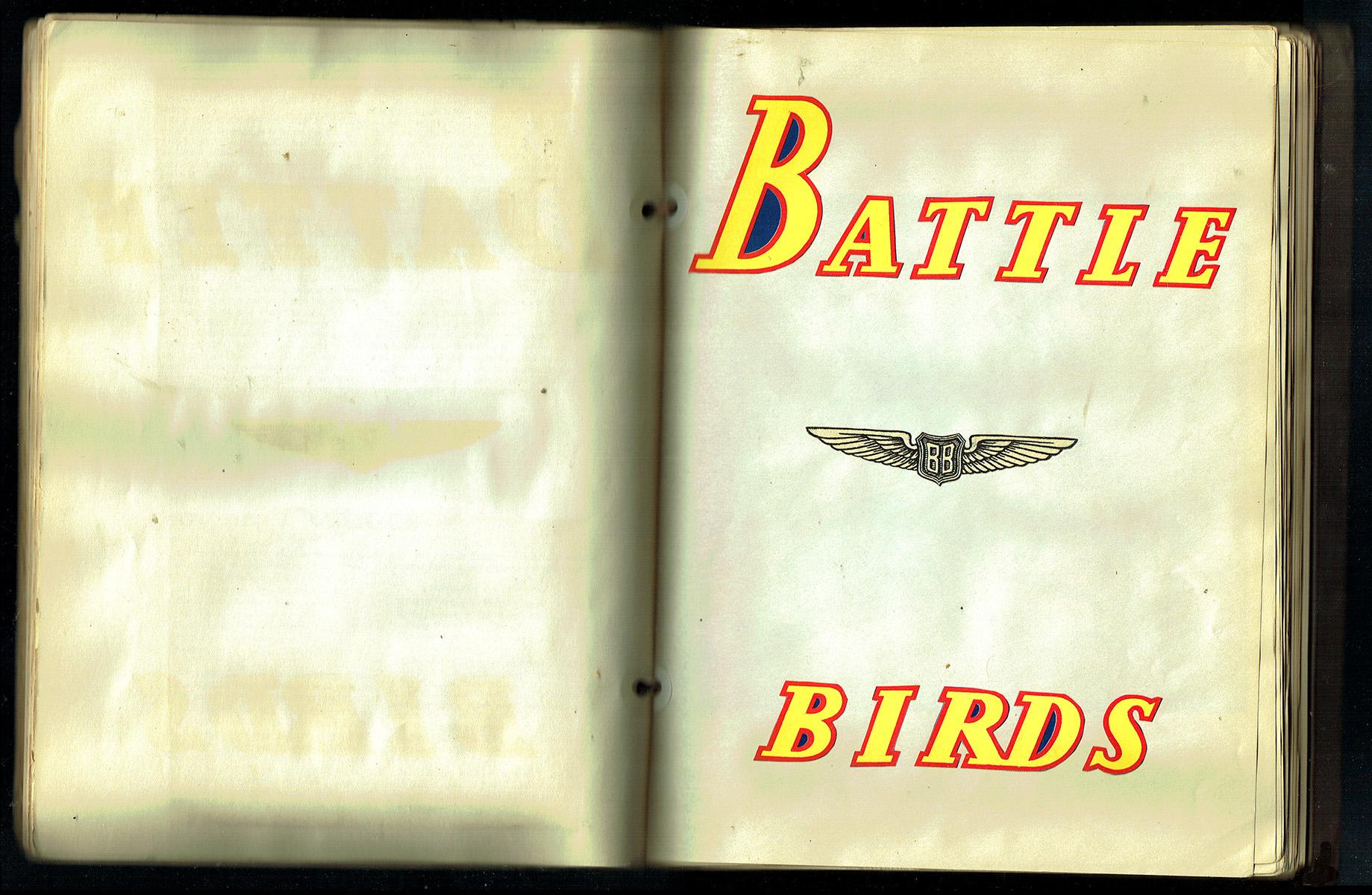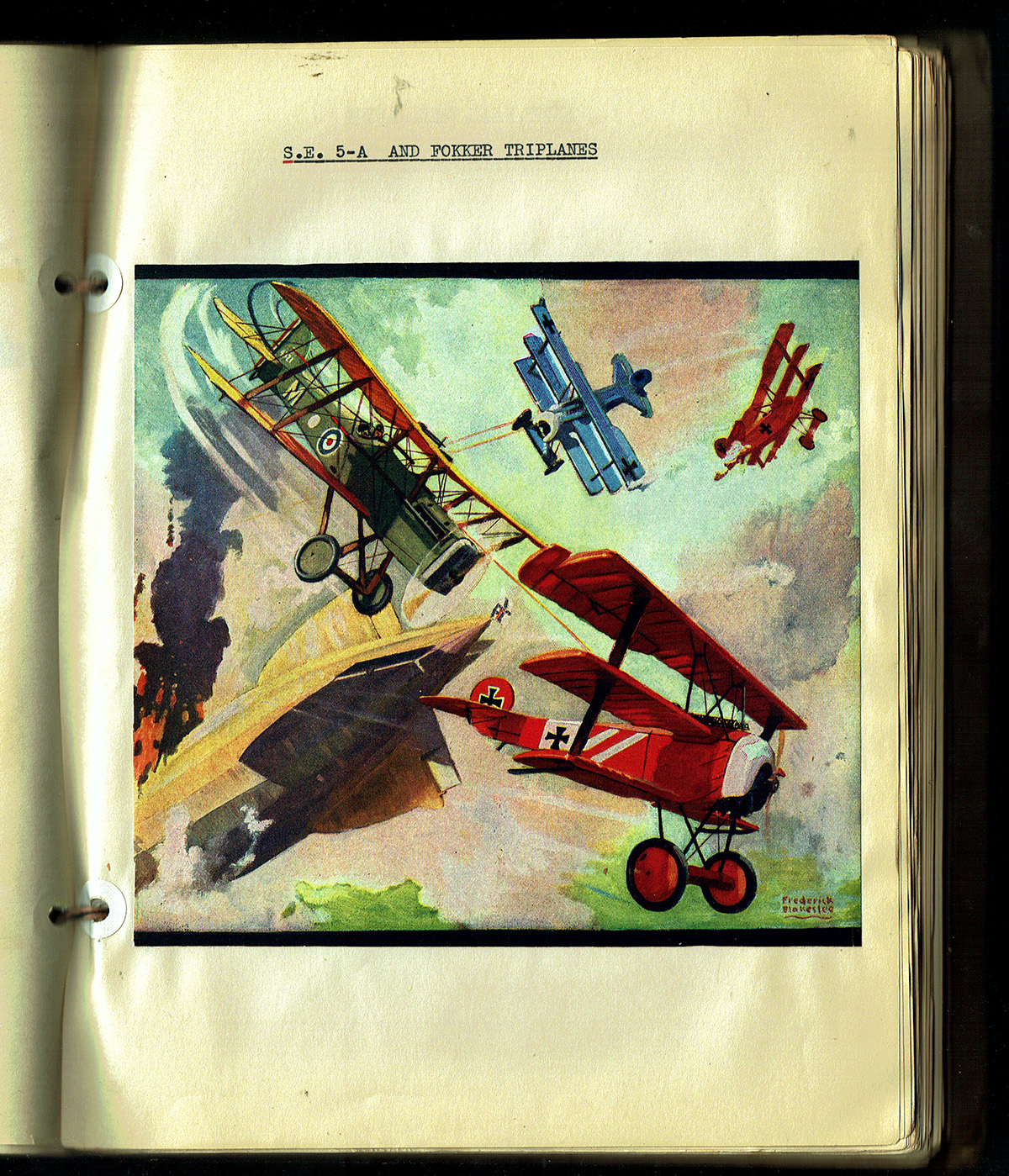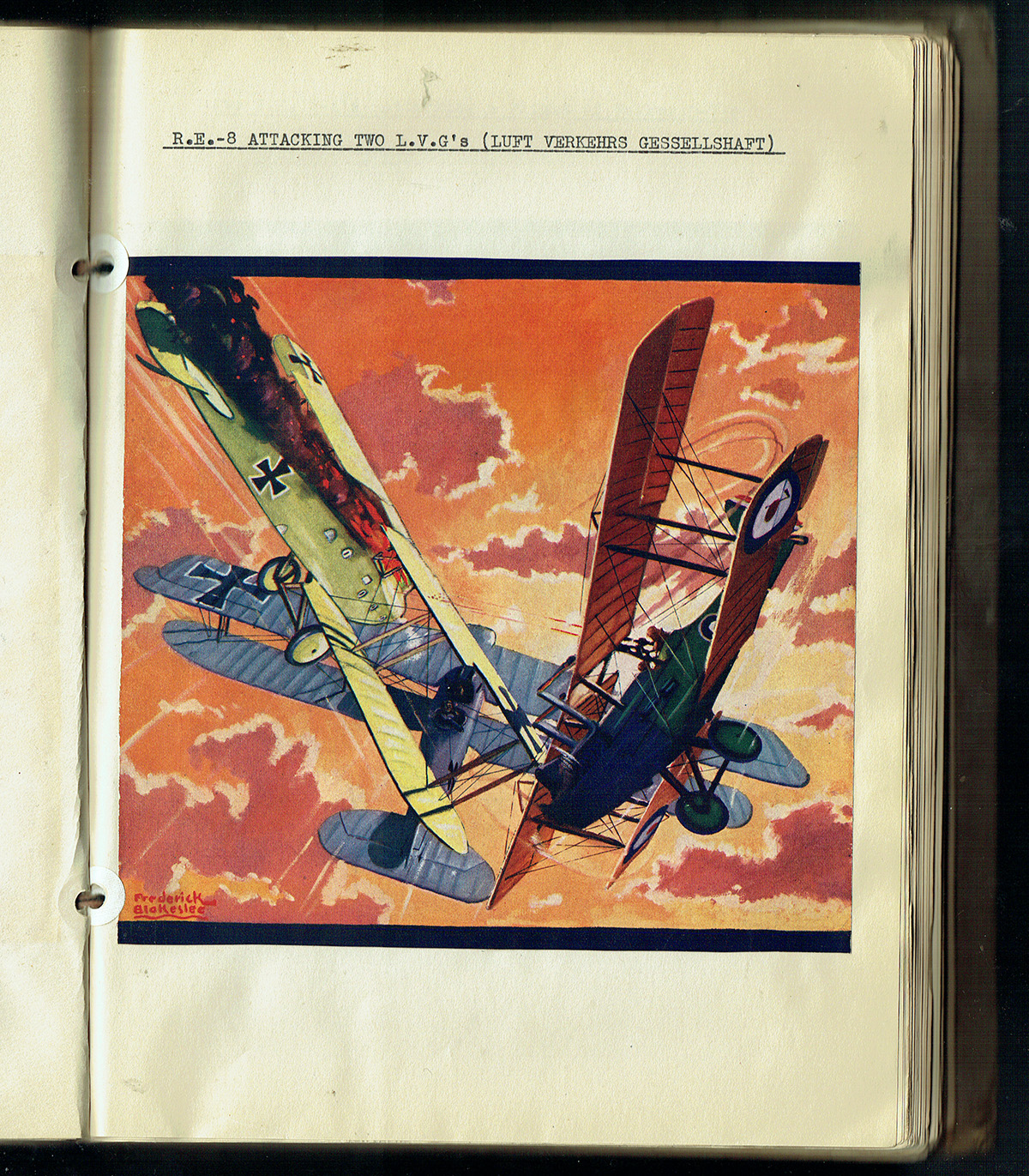Eugene M. Frandzen painted the covers of Sky Fighters from its first issue in 1932 until he moved on from the pulps in 1939. At this point in the run, the covers were about the planes featured on the cover more than the story depicted. On the June 1936 cover, It’s the L.V.G. C6 being pursued through the Italian mountains by a Macchi M14!
The Ships on the Cover
 ITALY’S air force was a meager thing in 1914; but as soon as the greater powers started tearing each other apart Italy concentrated on engines and planes and by the time she entered the war she was so well winged with fighting planes that she was selling her surplus to the Allies. ”
ITALY’S air force was a meager thing in 1914; but as soon as the greater powers started tearing each other apart Italy concentrated on engines and planes and by the time she entered the war she was so well winged with fighting planes that she was selling her surplus to the Allies. ”
After men have struggled up thousands of feet of treacherous slippery mountains in continuous danger from snow slides as well as from the Austrian enemy, they do not give up their hard-gained toehold until the last man is out. Not only have the defending Italians in the cover picture dragged themselves to a dizzy height, but on their aching backs have borne parts of their mountain artillery piece. Others carried wicker cartons containing shells and food. That one small mountain gun was now holding up an entire Austrian regiment which was trying to penetrate a snow-choked pass in the narrow gorge below.
Frantic Demands for Help
Feverishly the Austrians dug the pass out, hoping to get through in single file. Then the Italian sharpshooting artillerymen smacked a few of their precious shells into the precipitous cliffs above. As though a hydrant had been opened forty or fifty tons of tightly banked snow toppled down into the gorge burying dozens of men under a cold suffocating blanket. The moment this was accomplished the cannon was swabbed out and the Italians awaited the time for another salvo. The terrain made it impossible for the Austrians to get the range of their enemies above, so as usual when the foot sloggers are brought to a halt frantic demands for help went back to the rear, to the aviation unit.

Only one plane was available, but it would be enough, the airmen said. What was one small cannon to a snorting L.V.G. (Luft Verkehrs Gesellschaft) C6, a mighty two-seater yanked into dizzy heights by its churning 230 h.p. Benz. With two machine-guns turned on the brazen Italians the cannon would soon be silenced.
Up into the cold air raced the ton and a half plane. Its observer and pilot ground their teeth as they thought of the carnage caused by the single piece of artillery. So intent were they on revenge that they did not spot a tiny single-seater Macchi M14 which was quickly closing in from below. In front and on the same level appeared the Italians and their magic cannon. “I’ll give them the Spandau first,” yelled the pilot to his observer, “then I’ll bank in close and you finish them with your Parabellum.”

Blazing Cannon
The front gun blazed at the cannoneers crouched on their platform behind their gun. They waited until the ship was about to swerve. Suddenly the gun crew came to life. As the plane banked and the observer sounded off, the cannon blazed. A direct hit through the right wings. An aileron was out of commission. The Austrian plane lurched crazily past the pursuing Macchi, lost altitude in an uncontrollable spiral. The horrified Austrians in the pass saw it loom above them, then fall out of control in a screaming dive into the tons of snow directly above.
A faint crackling which grew into a thunderous mounting crescendo reverberated through the valley. The ground shook and groaned as the entire side of the mountain slipped and came thundering down on the massed Austrians. For ten minutes the murderous snow swept down, and then through the mist of powdery flakes the Italians looked down on a flat narrow plateau. There was no pass, no Austrians, no target left for the defenders. Their commanding officer shrugged his shoulders and beamed on his gunners. He pulled out a bottle of the stuff Saint Bernard dogs carry in canteens. He smiled, passed it to his gun-sighter and said, “After you, sir!”

Sky Fighters, June 1936 by Eugene M. Frandzen
(The Ships on The Cover Page)
 Like many in the late 20’s and early 30’s, Robert O’Neil was fascinated with aviation and as such, a large part of both volumes of his scrapbooks is taken up with a cataloging of the many different types of planes. In addition to Flying Aces’ “War Planes Album” and Sky Birds’ “Model Planes of All Nations”, Robert also featured Frederick Blakeslee’s magnificent Battle Aces covers.
Like many in the late 20’s and early 30’s, Robert O’Neil was fascinated with aviation and as such, a large part of both volumes of his scrapbooks is taken up with a cataloging of the many different types of planes. In addition to Flying Aces’ “War Planes Album” and Sky Birds’ “Model Planes of All Nations”, Robert also featured Frederick Blakeslee’s magnificent Battle Aces covers.




















